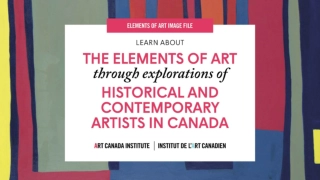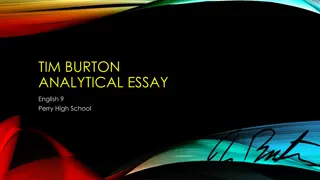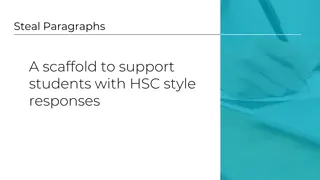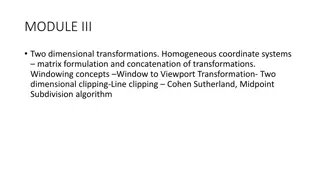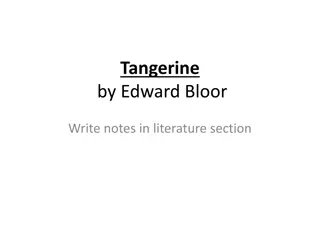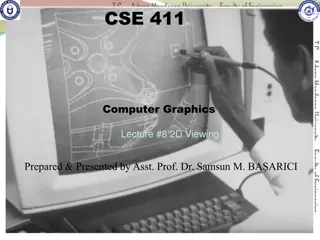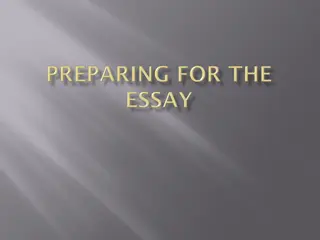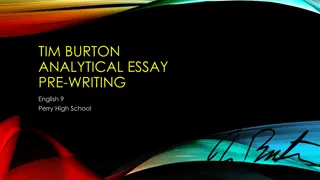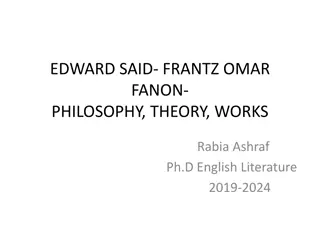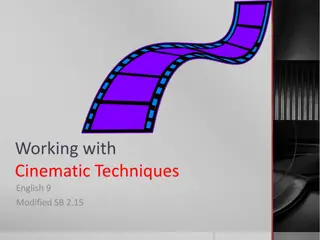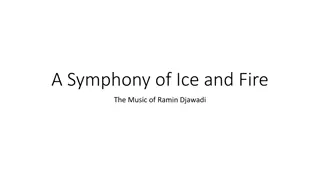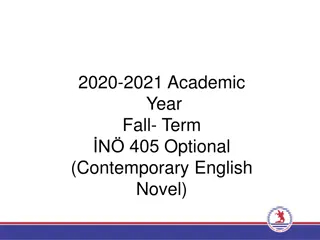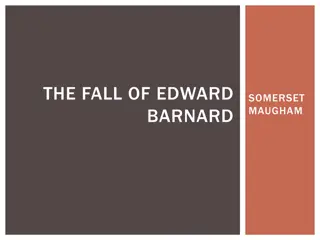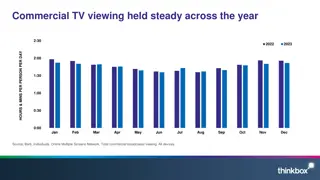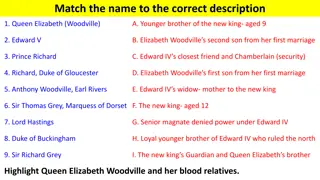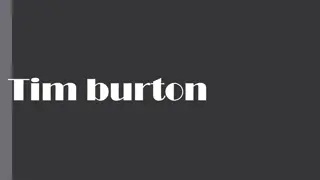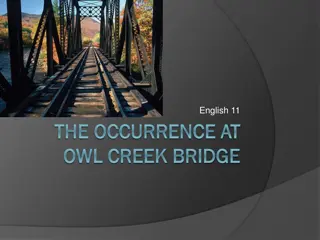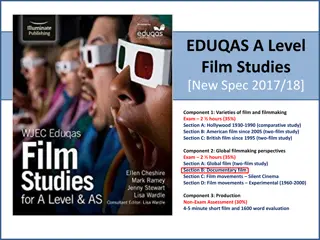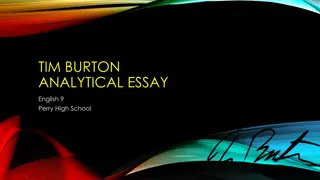Cinematic Analysis Workshop for "Edward Scissorhands" Viewing
Engage in a structured workshop to analyze cinematic techniques while viewing "Edward Scissorhands." From noting observations to group discussions and reflective commentaries, this interactive session enhances understanding of film analysis. Dive deep into framing, lighting, camera movement, music/sound, and editing to dissect the visual and auditory elements of the film.
Download Presentation

Please find below an Image/Link to download the presentation.
The content on the website is provided AS IS for your information and personal use only. It may not be sold, licensed, or shared on other websites without obtaining consent from the author.If you encounter any issues during the download, it is possible that the publisher has removed the file from their server.
You are allowed to download the files provided on this website for personal or commercial use, subject to the condition that they are used lawfully. All files are the property of their respective owners.
The content on the website is provided AS IS for your information and personal use only. It may not be sold, licensed, or shared on other websites without obtaining consent from the author.
E N D
Presentation Transcript
Turn to your hard copy of a notes page titled My Edward Scissorhands viewing notes. While we watch the film, just jot down anything you notice. It can be a cinematic technique, it can be a question or thought that you have, or any general idea that pops into your mind to track your thoughts while you view. Remember that we are viewing for analysis, not for enjoyment, so you need to be actively engaged with your thoughts throughout the viewing.
In your groups, discuss and jot down answers to questions 1-4. Be ready to share your thoughts!
You are sitting in your home-base group. These are the people who will be responsible for teaching you. Now, number yourselves off from 1-5. Now move to the assigned location based on your number.
We are now going to re-watch a segment of the film. Each numbered group will be responsible for analyzing that segment for a specific cinematic technique. Take a moment and review your assigned techniques using your flipchart. 1 s Framing/Angles 2 s Lighting 3 s Camera Movement 4 s Music/Sound 5 s Editing As we watch the film, record your notes on you re my notes sheet for your assigned technique.
In your expert groups, discuss your observations and come to a consensus about what you observed. Document your agreed upon ideas in the chart on page 166.
Now return to home-base and teach each other what your groups observed, completing all of the columns on page 166.
We are now going to add the reflective commentary to your analytic statements. This is the elaboration/explanation element of your analytic statement. If the evidence is the WHAT, the reflective commentary is the SO WHAT?
Writing an Analytical Statement with Reflective Commentary: Tim Burton, in Edward Scissorhands, uses ____________ (cinematic element) in order to _______________ (achieve what purpose). For example, ____________________ (evidence and effect combined). _________________________________ ) reflective commentary Writing an Analytical Statement: Tim Burton, in Edward Scissorhands, uses a long shot in order to show the vulnerability of characters. For example, when Peg is upstairs in the castle, the long shot makes her look small so that the viewer worries about her safety. Reflective Commentary: By making viewers worry about Peg s safety, Burton is setting up Edward as a potential villain, even though it quickly shifts to showing him as an awkward loner.
Write an analytic statement with reflective commentary (three sentences minimum) for one of your selected cinematic elements. Writing an Analytical Statement: Tim Burton, in Edward Scissorhands, uses ____________ (cinematic element) in order to _______________ (achieve what purpose). For example, ____________________ (evidence and effect combined). ______________________________ (reflective commentary)
Writing an Analytical Statement: Tim Burton, in Edward Scissorhands, uses a long shot in order to show the vulnerability of characters. For example, when Peg is upstairs in the castle, the long shot makes her look small so that the viewer worries about her safety. Reflective Commentary: By making viewers worry about Peg s safety, Burton is setting up Edward as a potential villain, even though it quickly shifts to showing him as an awkward loner. Statement of Closure: Therefore, Burton is able to portray Edward as the anti-hero through the use of long shot which made him seem lonely and non- threatening.
Writing an Analytical Statement: Tim Burton, in Edward Scissorhands, uses a long shot in order to show the vulnerability of characters. For example, when Peg is upstairs in the castle, the long shot makes her look small so that the viewer worries about her safety. Reflective Commentary: By making viewers worry about Peg s safety, Burton is setting up Edward as a potential villain, even though it quickly shifts to showing him as an awkward loner. Statement of Closure: Therefore, Burton is able to portray Edward as the anti-hero through the use of long shot which made him seem lonely and non- threatening.


